|
Printables |
PowerPoints |
Online exercises |
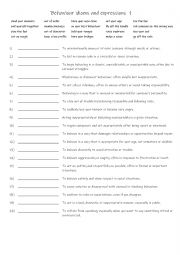
|
B1+-C1 Behaviour idioms and expressions 1
First, students need to familiarise themselves with the 20 idioms and expressions and their meanings. Then they read the definitions to see which one is being described and write that word in the space provided Answers on page 2.
Level: intermediate
Age: 12-100
Type:
Downloads: 120
|
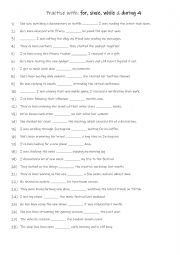
|
A2-B1 Practise with for, since, while & during (4)
Learning to use for, since, during, and while is important because these words help student�s express time accurately in English, especially when talking about the duration and timing of events. For indicates the length of time an action takes place, while since pinpoints when an action started and continues until now, helping to show continuity. D...
Level: intermediate
Age: 9-100
Type:
Downloads: 113
|

|
Past perfect 2
First, students need to familiarise themselves with the 20 verbs. Then they read the sentences to see which verb is needed to complete the sentence. Each verb is used 1 time! Answers on page 2
Level: elementary
Age: 10-100
Type:
Downloads: 111
|
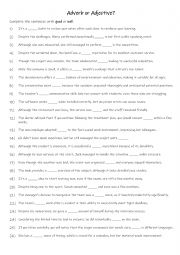
|
B1 adjective or adverb practise using: good or well
Students read the sentences to see if an adjective or an adverb is needed to complete the sentence. 13 sentences require an adjective and 13 sentences require and adverb to complete the sentences. Answers on page 2.
Level: intermediate
Age: 10-100
Type: worksheet
Downloads: 119
|
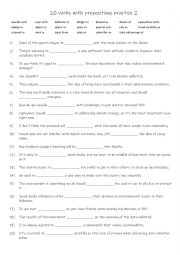
|
B1-B2 20 verbs with prepositions practice 2
Students should learn verb + and preposition phrasal verbs combinations because they are essential for effective communication in both spoken and written English. These expressions help students speak more naturally and fluently, making them sound more like native speakers. They also improve comprehension, as many of these phrases have meanings tha...
Level: intermediate
Age: 10-100
Type:
Downloads: 104
|
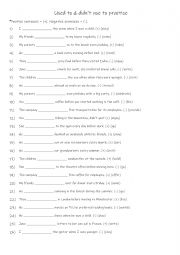
|
A2+-B1+ Used to & didn�t used to
Students complete the sentences using the given verbs. Positive sentences = (+). Negative sentences = (-). There are 13 positive and 13 negative sentences. Answers on page 2.
Level: elementary
Age: 8-100
Type:
Downloads: 129
|
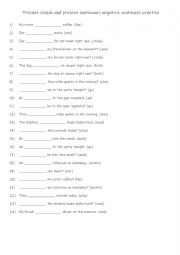
|
A1+-A2 Present simple and present continuous negative sentences practise
Students read the sentences to see which negative tense is needed to complete the sentence using the infinitive in () at the end of each sentence. Answers on page 2
Level: elementary
Age: 8-100
Type:
Downloads: 105
|

|
Why do people still kill exotic and defenseless animals?
500-Word reading article with a 20-word gap fill exercise about why people still hunt animals for both food and for sport. It takes an deeper look at the reasons for and against hunting .This sheet is suitable for higher level A2 to B1 students of all ages. An answer sheet is included. For higher level students they could be put in groups to give /...
Level: elementary
Age: 12-100
Type: worksheet
Downloads: 1855
|
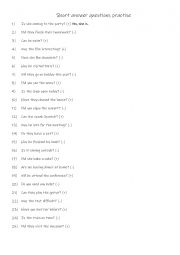
|
A1 Short answer practise
Students read the questions,then using the clues: (+) = positive answer required / (-) = negative answer required complete the questions. Answers on page 2.
Level: elementary
Age: 8-100
Type:
Downloads: 103
|
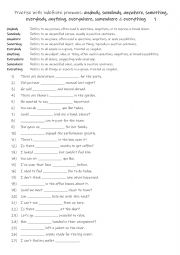
|
A2-B1 Practise with indefinite pronouns anybody, somebody, anywhere, something, everybody, anything, everywhere, somewhere & everything 1
Learning indefinite pronouns like anybody, somebody, anywhere, something, everybody, anything, everywhere, somewhere, and everything is essential for students to express general ideas or refer to non-specific people, places, or things. These pronouns are commonly used in everyday communication to ask questions (e.g., "Is there anybody here?"), make...
Level: intermediate
Age: 9-100
Type:
Downloads: 101
|
|
|
|
|












